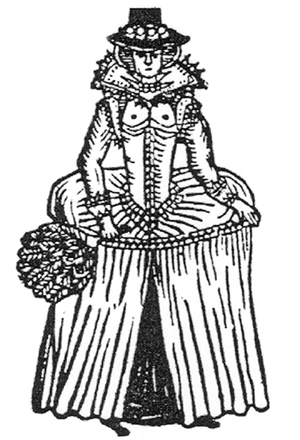Artifact: Bare Virtue

Pictured here is a British woodcut of the 17th century; it's typical of hundreds that once illustrated the era's cheap ballad sheets. The most striking aspect of this nearly 400-year-old image is that it portrays a woman covered quite modestly, but for her bared breasts. Modern viewers might suppose they are looking at a period slattern, but the original audience likely would have seen the image very differently: as an illustration of virtue.
As the British historian Angela McShane Jones recently told Discovery News, exposed breasts "began as a very high-class fashion which demonstrated…classical ideals of female beauty. The husband of a woman dressed like this would be proud to have his classical beauty on display, and for a woman it was part of her honor that she could display her virtue in this way."
The virtuous nude has a long history, not only in woodcuts and in paintings with mythological themes but, as scholar Katharine Gillespie points out, in early republican portrayals of Lady Liberty too. Interestingly, bared limbs were not necessarily as virtuous as bared breasts; over the centuries, the body has been sexualized and desexualized in many different ways.
At a time when a naked breast brings cries of "indecency," such shifts in fashion can be revealing in more ways than one.
Show Comments (1)